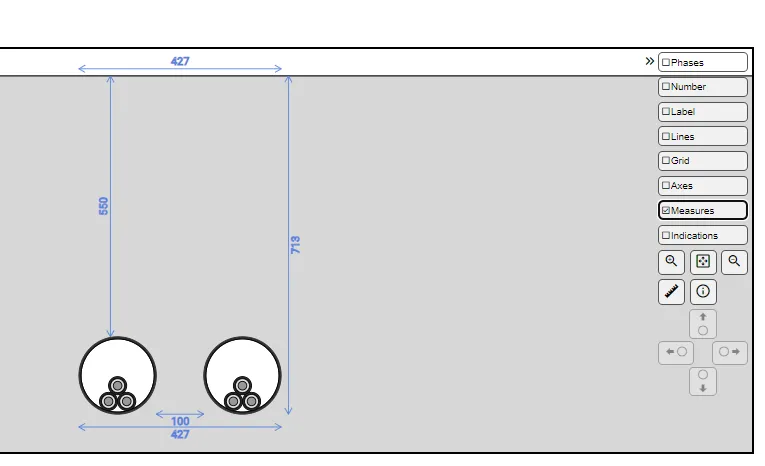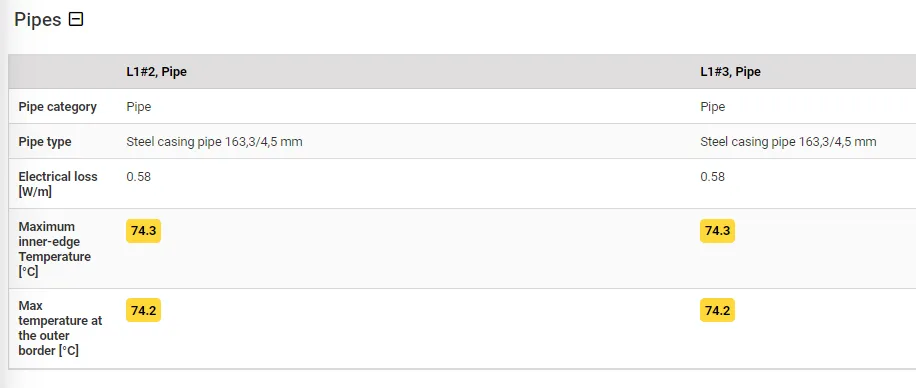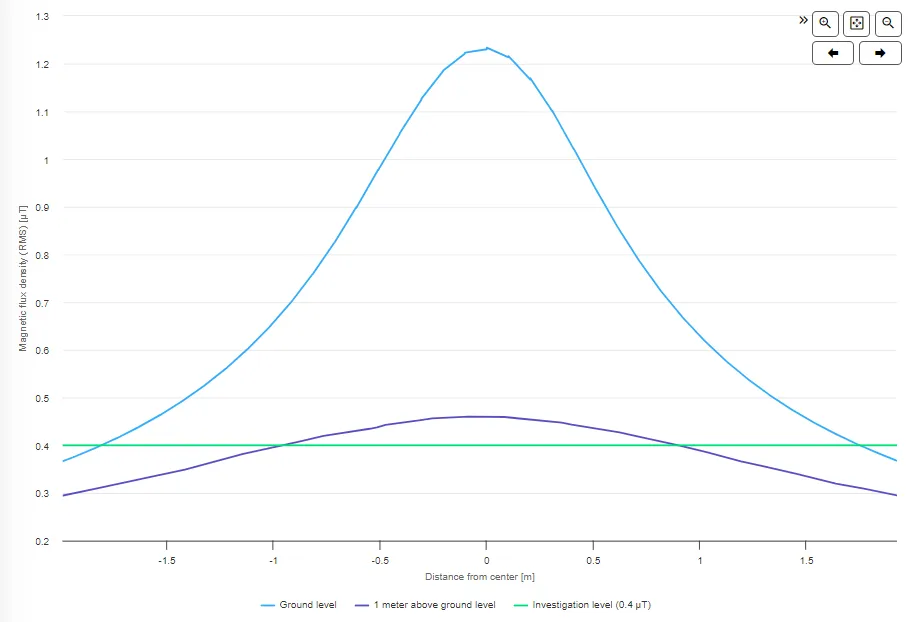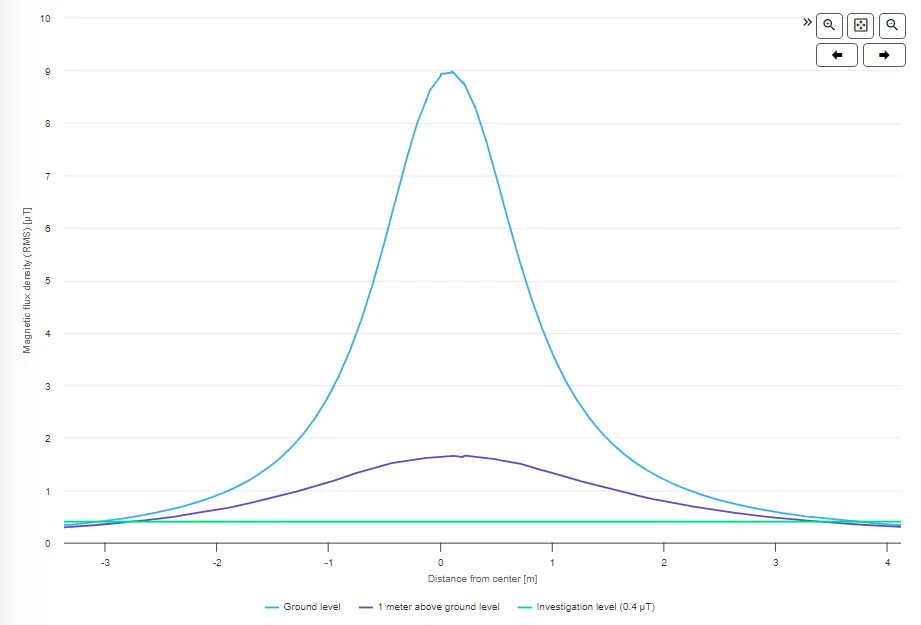Cables in Metal Pipes
This feature can calculate the effects of cables in metal pipes, including induction and heating of metal pipes.
Introduction
The presence of cables inside a magnetic pipe causes eddy current losses and hysteresis losses in that pipe. In some cases, these losses lead to a significant reduction in the ampacity of cables
Ferromagnetic Properties
Steel and magnetic stainless steel possess ferromagnetic properties, meaning they retain some part of the induced magnetic moment in the absence of an externally applied magnetic field (1). These materials exhibit hysteretic behavior represented with a relative permeability μr. The magnetic flux B lags behind the magnetic field H, leading to heat losses in a time-varying magnetic field. The relative permeability μr can be expressed as having both real and imaginary components:
(1) μr = μ’r - μ”r j
The ratio of the imaginary to the real part of the relative permeability is known as the magnetic loss tangent, representing the power lost relative to the power stored in the material:
(2) tanδ = ( μ”r ) / ( μ’r )
In Grøft Design®, the magnetic hysteresis loop is approximated using a linear relationship (2). The material properties of steel and magnetic stainless steel implemented in the software are based on the references listed in “default material values”.
The user may specify the relative permeability μr and magnetic loss tangent tanδ for custom-defined metallic components.
Example of a Model with a Metal Pipe
Start by adding a metal pipe. You can use one of the pipes in the component library or create a custom pipe in the component designer. A third option is to add a metal pipe by creating a “custom item”.
There is considerable variation in the physical properties of steel and stainless steel, and these properties should be adjusted for each pipe or casing to ensure more accurate simulations.

Once the desired design is set, run the simulation to view the losses in the pipes in the results:

The graphs below illustrate the difference in magnetic field strength when using a 163/4.5 mm steel pipe compared to a 160 mm PVC pipe. At ground level, the magnetic field is reduced from 9.0 μT to 1.2 μT when a steel pipe is used.


Steel Pipe Around a Single Conductor
A metal pipe surrounding a single conductor will trap a significant portion of the magnetic field, leading to increased eddy currents and higher temperatures. This, in turn, greatly reduces the cable’s ampacity.
To illustrate this phenomenon, the following case was simulated using Grøft Design®:
Cable 1: TSLF 3x1x240 Al, installed in a steel pipe (75 mm diameter / 4 mm wall thickness)
Cable 2: TSLF 3x1x240 Al, installed in a PE pipe (75 mm diameter)
For both cables, each phase conductor is placed in a separate pipe. The distance between the pipes is set to 2000 mm to minimize mutual thermal influence.
As shown in the figure below, the cable installed in steel pipes reaches a significantly higher temperature under the same load conditions compared to the cable in PE pipes.
| Installation Type | Cable Type | Current (RMS) [A] | Max Conductor Temp [°C] | Max Current Screen (RMS) [A] | Electrical Loss in Pipe [W/m] |
|---|---|---|---|---|---|
| Steel pipe | TSLF 3x1x240 AL | 300 | 79.3 | 205.0 | 14.2 |
| PE pipe | TSLF 3x1x240 AL | 300 | 178.3 | 89.9 | - |

Pipe-in-Pipe
The user should be aware that the limitation for pipe-in-pipe calculations also applies if a pipe is placed inside a metal pipe. The heat distribution in the outer pipe layer is calculated without convection.
Circulating Current Losses
No circulating current losses are considered for magnetic pipes, as the pipe is buried in the ground, where the potential 0V is assumed.
Default Material Values
Since the physical properties of steel and stainless steel can vary significantly, it’s important to adjust the values for each pipe or casing to achieve more accurate simulations.
Default metal values can be found here
Verification
The verification of this feature is found here